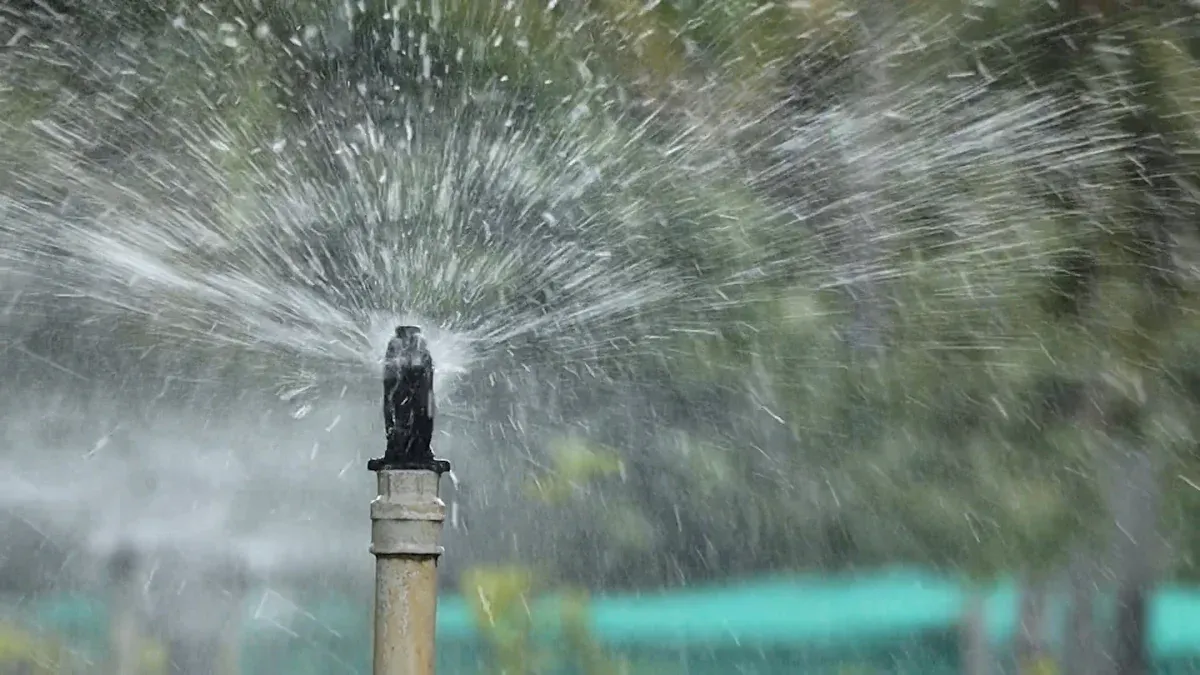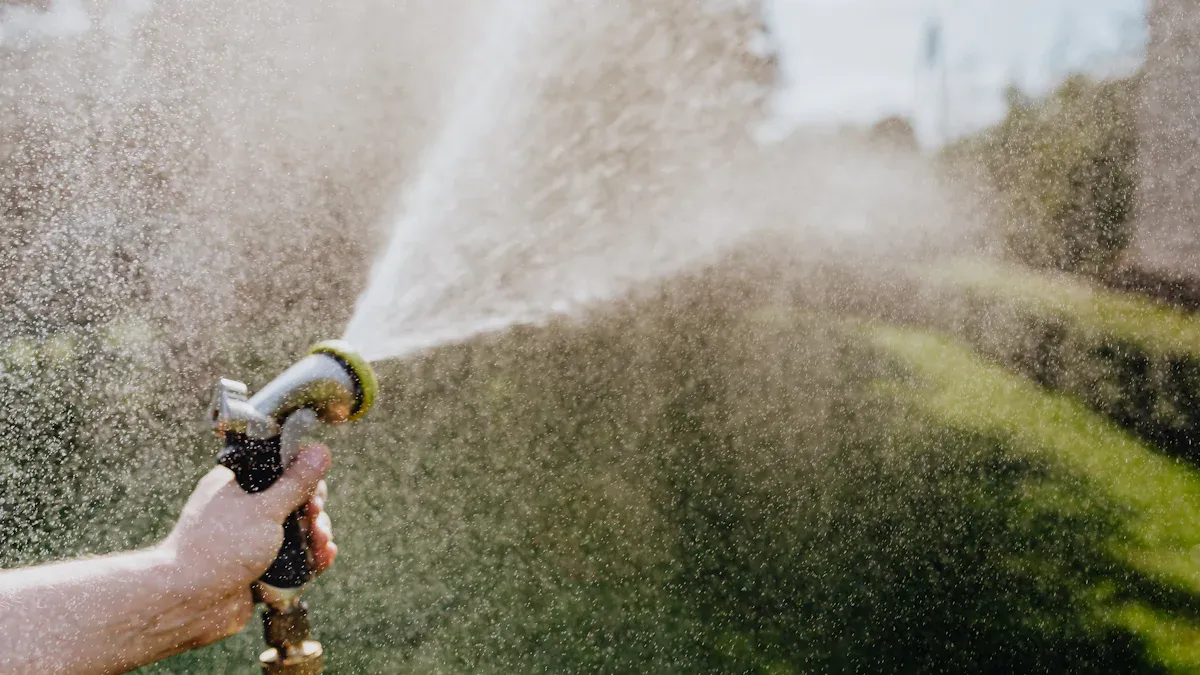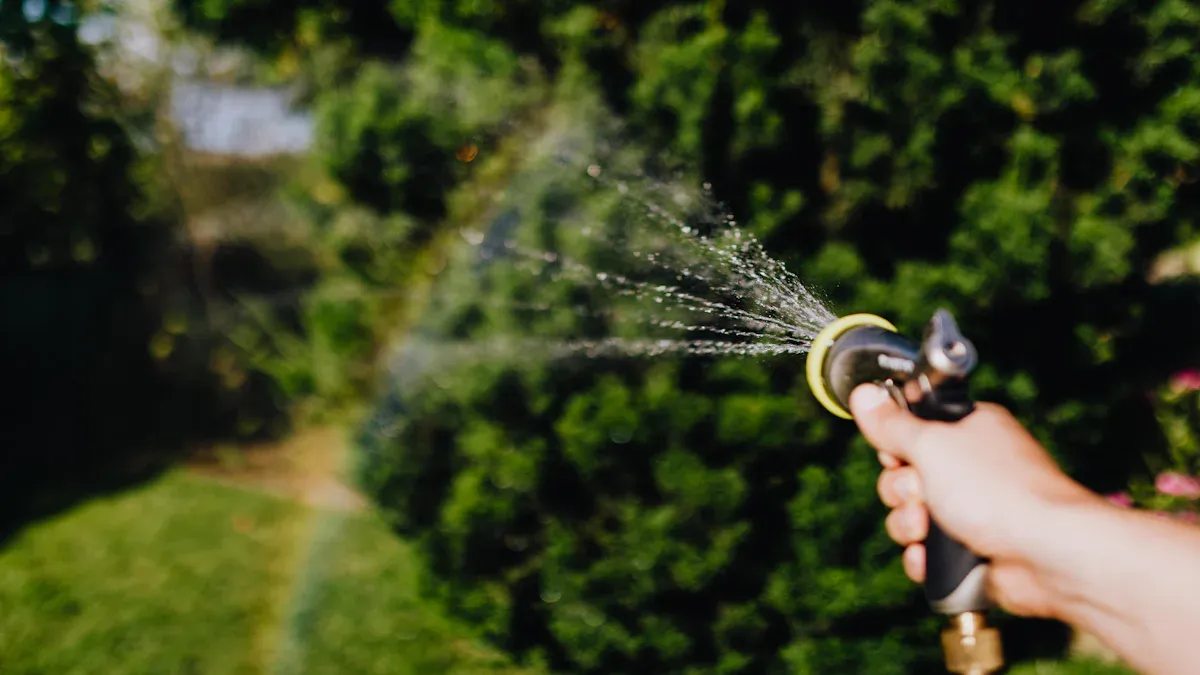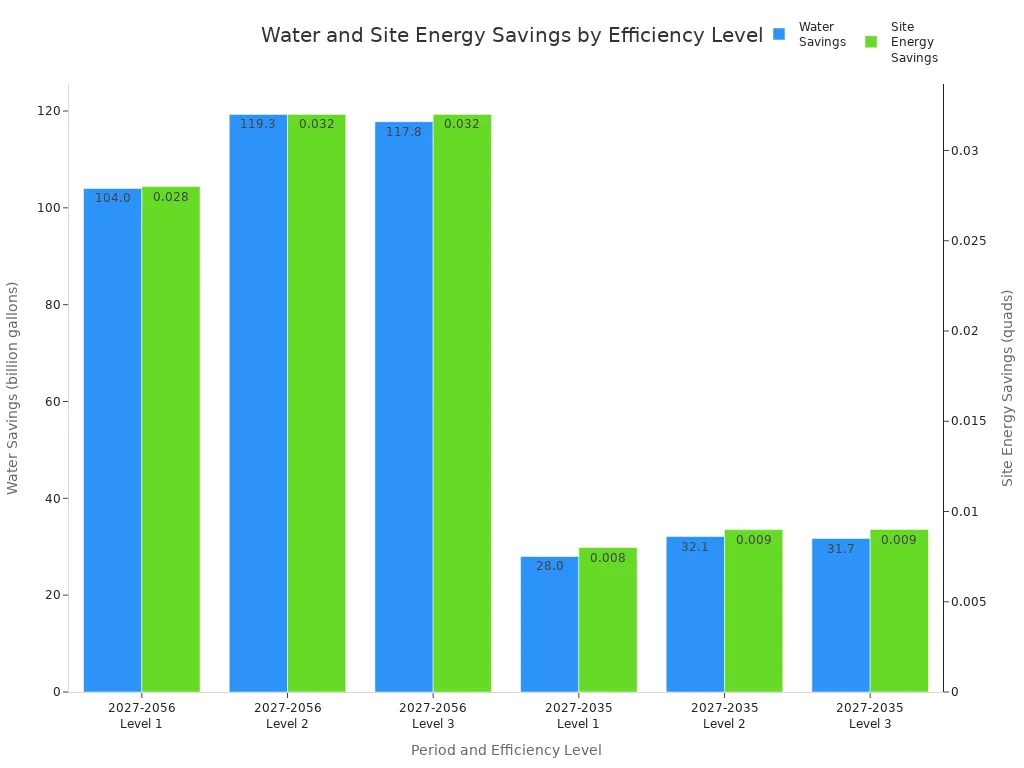
Manufacturers now deliver a wide range of water curtain nozzle of high quality by using advanced materials, digital controls, and energy-efficient designs. IoT integration enables real-time performance monitoring. Corrosion-resistant alloys extend nozzle life. These innovations support higher efficiency in fire protection, industrial safety, and water conservation.
Key Takeaways
- Advanced materials and 3D printing improve nozzle durability and performance while reducing environmental impact and maintenance needs.
- IoT sensors and automated self-cleaning enable real-time monitoring and maintenance, boosting safety and cutting emergency repair costs.
- Energy-efficient designs and water recycling systems save resources, lower costs, and support sustainable facility operations.
Wide Range Of Water Curtain Nozzle Of High Quality: Next-Generation Materials and Manufacturing
Advanced Corrosion-Resistant Alloys and Composites
Manufacturers now rely on advanced corrosion-resistant alloys and composites to deliver a wide range of water curtain nozzle of high quality. These materials withstand harsh industrial environments and extend the operational lifespan of each nozzle. Stainless steel, duplex alloys, and engineered composites resist chemical attack and physical wear. This durability reduces maintenance needs and ensures consistent performance in demanding applications.
Recent lifecycle analyses highlight the environmental advantages of using innovative materials in nozzle manufacturing. The table below summarizes key findings from these studies:
| Aspect | Details | Environmental Benefit |
|---|---|---|
| Material Choice | Bio-based polymers (e.g., bio-PE) as substrate | Capture atmospheric CO2, reducing net emissions |
| Electrode Material | Copper nanoparticles (Cu NPs) preferred over silver nanoparticles (Ag NPs) | Cu NPs have significantly lower global warming potential (GWP); Ag NP ink produces double the CO2eq emissions compared to Cu NP ink |
| Manufacturing Process | Screen printing combined with intense pulsed light (IPL) processing | Lower energy consumption, fewer processing steps, less material wastage compared to traditional electronics manufacturing |
| Emission Comparison | Sensor tag with best configuration emits 25.7 g CO2eq vs. 42 g CO2eq in reference; conventional printed-circuit-board antenna emits 613 g CO2eq | Over 20 times reduction in greenhouse gas emissions compared to conventional methods |
| End-of-Life (EoL) | Recycling preferred over landfilling or composting | Most sustainable option reducing environmental impact |
| Additional Findings | Biopolymers’ organic origin leads to carbon capture; however, biodegradability benefits depend on disposal conditions | Potential for reduced or negative CO2 balance, but requires proper waste management |
These results demonstrate that the adoption of advanced materials in the production of a wide range of water curtain nozzle of high quality not only improves product longevity but also supports sustainability goals. Facilities benefit from reduced emissions and lower environmental impact throughout the product lifecycle.
3D Printing and Precision Engineering
3D printing and precision engineering have transformed the manufacturing process for a wide range of water curtain nozzle of high quality. Additive manufacturing enables complex internal geometries that optimize water flow and spray distribution. Engineers can now design nozzles with intricate channels and surfaces that were previously impossible to produce using traditional methods.
Precision engineering ensures that each nozzle meets strict tolerances, resulting in reliable and repeatable performance. Manufacturers use advanced simulation tools to refine designs before production. This approach reduces material waste and shortens development cycles.
In industrial environments, engineers evaluate the efficiency of new nozzle designs using several key performance indicators:
- Smoke blocking efficiency, which quantifies the nozzle’s ability to control smoke movement.
- Water spray intensity, a parameter that affects both visibility and temperature distribution.
- Water curtain momentum ratio (R), which influences smoke blocking and thermal insulation, with optimal performance achieved when R ≤ 2.
- Thermal insulation efficiency, measuring the nozzle’s capacity to block heat.
- Visibility, assessed at 2 meters above floor level to ensure safe evacuation.
- Temperature, monitored to remain below critical safety thresholds, such as 60 °C.
These metrics guide the development of a wide range of water curtain nozzle of high quality, ensuring that each product meets the rigorous demands of fire protection and industrial safety. By combining advanced materials with state-of-the-art manufacturing techniques, the industry continues to set new standards for performance, reliability, and environmental responsibility.
Smart Nozzle Technologies and Digital Transformation
IoT Sensors for Real-Time Monitoring and Control
Water curtain nozzle technology has entered a new era with the integration of IoT sensors. These sensors collect data on flow rate, pressure, temperature, and spray pattern. Facility managers receive instant alerts if performance drops below set thresholds. This real-time feedback allows teams to respond quickly and maintain optimal safety.
Key benefits of IoT-enabled nozzles include:
- Continuous Performance Tracking: Sensors monitor nozzle operation 24/7. They detect blockages, leaks, or pressure drops before these issues escalate.
- Remote Access: Operators can view system status from any location using a secure dashboard. This feature reduces the need for on-site inspections.
- Predictive Maintenance: Data analytics predict when a nozzle will require service. Maintenance teams schedule repairs before failures occur, reducing downtime.
- Regulatory Compliance: Automated logs help facilities meet safety and environmental standards. Reports generate with a single click.
Tip: Facilities that adopt IoT-enabled water curtain nozzles often see a 30% reduction in emergency maintenance costs.
The table below summarizes the most common sensor types and their functions:
| Sensor Type | Function | Example Data Collected |
|---|---|---|
| Flow Sensor | Measures water flow rate | Liters per minute (L/min) |
| Pressure Sensor | Monitors system pressure | Bar, psi |
| Temperature Sensor | Tracks water and ambient temps | Degrees Celsius (°C) |
| Spray Pattern Sensor | Analyzes spray distribution | Coverage area, uniformity |
IoT integration transforms water curtain systems into intelligent networks. These networks support safer, more efficient facility operations.
Automated Self-Cleaning and Maintenance
Modern water curtain nozzles now feature automated self-cleaning mechanisms. These systems use built-in brushes, ultrasonic pulses, or reverse water jets to remove debris and mineral buildup. The cleaning process activates at scheduled intervals or when sensors detect reduced performance.
Engineers design these self-cleaning features to address common challenges:
- Clog Prevention: Automated cleaning keeps nozzle orifices clear. This ensures consistent spray patterns and reliable fire protection.
- Reduced Manual Labor: Maintenance teams spend less time on routine cleaning. They focus on higher-value tasks instead.
- Extended Equipment Life: Regular cleaning prevents corrosion and wear. Nozzles last longer and require fewer replacements.
Note: Automated self-cleaning systems can increase nozzle lifespan by up to 40%, according to recent industry studies.
A typical self-cleaning cycle follows these steps:
- Sensors detect a drop in flow or spray quality.
- The control unit triggers the cleaning mechanism.
- Brushes or jets remove obstructions from the nozzle.
- The system verifies restored performance before returning to normal operation.
Facility managers value these innovations for their impact on safety, efficiency, and cost savings. Automated maintenance ensures that water curtain nozzles operate at peak performance, even in challenging environments.
Enhanced Spray Patterns and Coverage

Adjustable and Adaptive Spray Geometries
Modern water curtain nozzles now feature adjustable and adaptive spray geometries. Engineers design these nozzles to change spray angles and patterns based on real-time needs. Facility operators can select from multiple spray modes, such as wide fan, narrow jet, or oscillating curtain. This flexibility allows teams to tailor water distribution for different hazards or architectural layouts.
Key benefits of adaptive spray geometries include:
- Improved Coverage: Nozzles reach more areas, reducing blind spots.
- Targeted Protection: Operators direct water exactly where needed.
- Resource Efficiency: Systems use less water by avoiding over-spraying.
Tip: Adaptive nozzles help facilities respond quickly to changing fire or smoke conditions, improving overall safety.
Computational Fluid Dynamics (CFD) in Design
Engineers use Computational Fluid Dynamics (CFD) to simulate water flow and spray behavior before building physical prototypes. CFD models predict how water droplets move, interact with air, and form barriers against heat or smoke. These simulations help designers optimize nozzle shapes and internal channels for maximum performance.
A typical CFD workflow includes:
- Creating a digital model of the nozzle.
- Simulating water flow under various pressures.
- Analyzing spray patterns and coverage zones.
- Refining the design based on simulation results.
CFD reduces trial-and-error in the lab. Teams achieve better results faster and with fewer resources. As a result, new nozzle designs deliver superior spray coverage and efficiency in real-world applications.
Energy and Water Efficiency Innovations

Low-Pressure, High-Efficiency Designs
Engineers have developed water curtain nozzles that operate efficiently at lower pressures. These designs reduce the energy needed to pump water, which lowers operational costs. Facilities benefit from consistent spray performance even when water pressure fluctuates. Manufacturers use advanced internal geometries to maximize water atomization and coverage. This approach ensures effective fire protection while minimizing resource use.
A recent analysis of commercial kitchen operations highlights the impact of these innovations. The study used an operating pressure of 60 psi and a water temperature of 108°F to estimate energy and water savings. Over a 30-year period, facilities adopting high-efficiency nozzles can achieve significant reductions in both site and primary energy use.
| Shipment Period | Efficiency Level | Site Energy Savings (quads) | Primary Energy Savings (quads) | Full-Fuel-Cycle Energy Savings (quads) | Water Savings (billion gallons) |
|---|---|---|---|---|---|
| 30 years (2027-2056) | 1 | 0.028 | 0.102 | 0.108 | 104.0 |
| 30 years (2027-2056) | 2 | 0.032 | 0.117 | 0.123 | 119.3 |
| 30 years (2027-2056) | 3 | 0.032 | 0.116 | 0.122 | 117.8 |

Water Recycling and Conservation Systems
Modern water curtain systems now incorporate advanced recycling and conservation features. These systems capture and filter used water, then return it to the nozzle network for reuse. Facilities reduce total water consumption and lower utility expenses. Automated controls monitor water quality and direct flow to maximize efficiency.
Operators report that these conservation systems help meet strict environmental standards. Over a nine-year period, facilities using these technologies saved up to 32 billion gallons of water. This level of savings supports both operational sustainability and regulatory compliance.
Post time: Jul-10-2025
